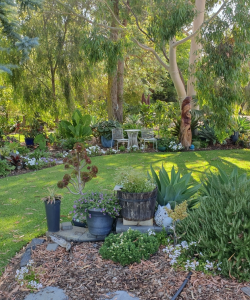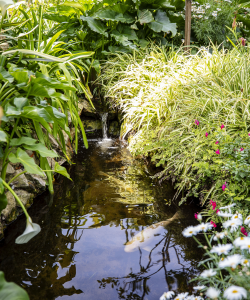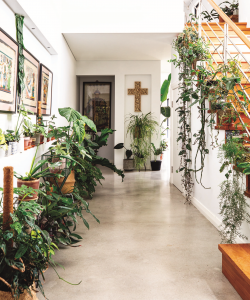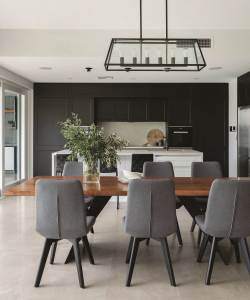
Ever passed by a garden and wondered how the owners managed to create something that seems to be so effortlessly spectacular and lush year round?
Did they spend thousands of dollars on a landscaper? Did their grandmother magically bestow on them the gift of innate horticultural prowess?
The truth is, it’s not as complicated as it seems. Of course it does help if you have a big budget – that means you can get a professional to draw up a cohesive plan and you won’t need to lift a finger. Advanced plants can be installed and the space is yours to enjoy instantly.
But there’s a lot to be said for planning and nurturing your own garden. As they say, it’s the journey, not the destination, and any good gardener will tell you their space is constantly evolving.
-
- Draw a plan of the yard. It doesn’t have to be perfect but get the proportions roughly correct and on a large piece of paper. Work initially in pencil. Once you have the boundaries in place and the fixed building structures, draw them in ink. You can get large-scale graph paper from craft shops and art shops. Make another two copies, either by photocopying or drawing by hand.
- Using the map of your yard, start considering your options for the style of your garden. If you want good results, you need to choose a direction. Passionate home gardeners often make a hobby of collecting a wide range of species but this seldom looks good planted out. If your goal is to create a library of rare and unusual plants, that’s fine but it won’t look good unless you narrow the field in some way. For example, you can collect many species of cacti and succulents and put them together for spectacular effect but if you start adding tropical plants and Australian natives into the mix, it is unlikely to work.
- If you know absolutely nothing about gardening, you can start by driving the streets in your local area and making note of the plants and looks you like. Pay special attention to any species that looks like it is thriving because this will give a good indication of what could work in your soil type and conditions. Take photos and either use a plant identification app or join a Facebook gardening group to identify the plants you like. It is important to consider the fully grown size of the plant and whether it is deciduous or evergreen.
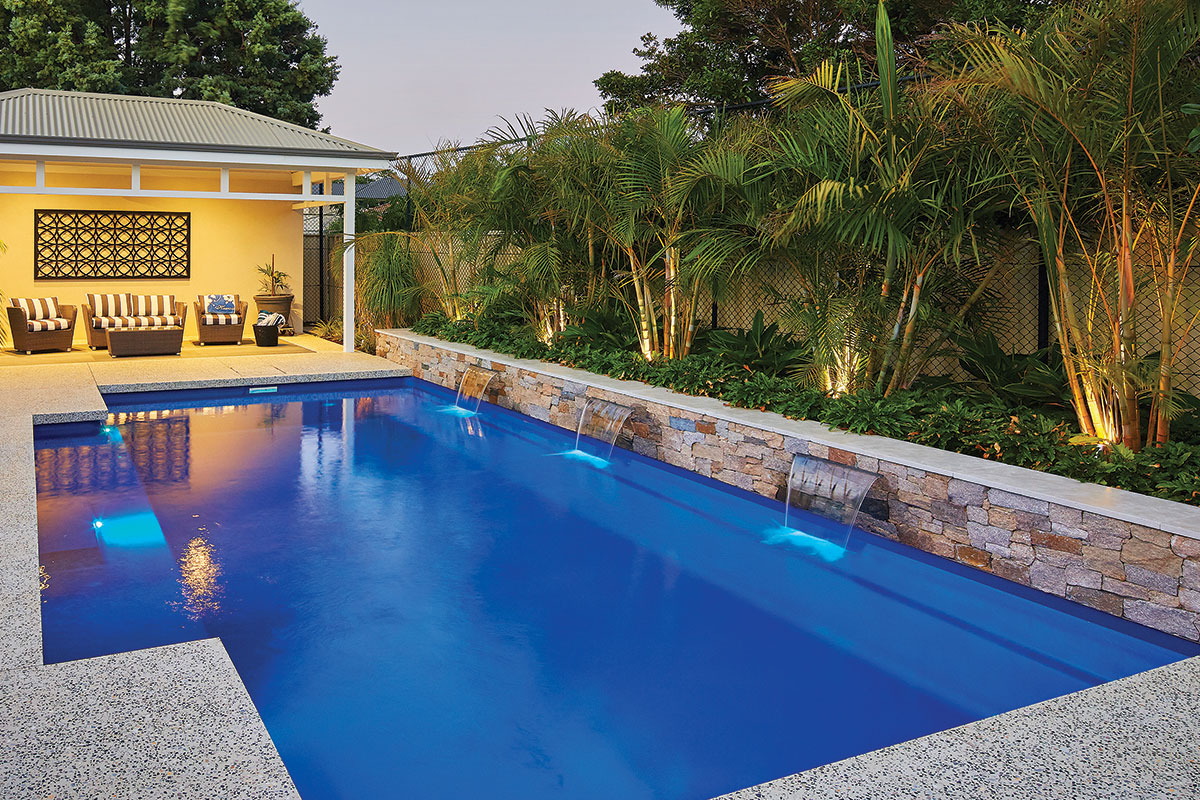
When you have identified the types of plants you like most, you can make an informed decision about the type of garden you want to create. As a starting point, here are a few to consider.
Leafy, glossy, green – Plants such as buxus hedges, ficus, magnolia, liriope and clivia are perfect for a theme of glossy green foliage.
PROS: Once established, not much maintenance required.
CONS: Requires a reasonable amount of watering and some pruning.
Scented gardens – Camellia, gardenia, lavender, rosemary, jasmine and roses will give you a garden bursting with green foliage and scented blooms.
PROS: If you plan it well, you can have a scented garden year round with amazing results in spring.
CONS: Requires regular water and maintenance and can be bad for allergies.
Succulents and cacti – Think agave, hen and chicks, portulaca, yucca, prickly pear. There are so many different species and they look fantastic planted en masse.
PROS: Well suited to arid Australian conditions and needs very little water or maintenance. Can be grown from cuttings, so little financial outlay required.
CONS: They’re mostly very slow growing and not usually suitable for children and dogs.
Colour themes – Having a range of plants and styles all with the same flowering colour is a great idea, especially if you plant multiples of any one type of plant.
PROS: Flexibility to create a visually interesting garden with lots of things to discover.
CONS: You need to be strict in working with multiples to avoid the end result lacking cohesion.
Australian natives – Think bottlebrush, wattles, native grasses, grass trees, banksias. Natives fell out of favour after the 1970s but as people have become more waterwise, these types of plants are becoming fashionable again.
PROS: They work well in most conditions, even when the soil isn’t great and water is scarce.
CONS: If you don’t have a structured plan, they can look arid and spindly, much like a patch of scrub.
After you have chosen the style of garden you want, go online and research the individual species you want to include. There are lots of horticultural groups around for you to ask for advice. Once you have a list of desired plants, it’s time to check what is available. Start calling local nurseries and wholesalers to see what you can get your hands on (certain species won’t be available all year round). If your budget is small, make sure you enquire about young plants. Mature stock is more expensive. Ask family and friends if they have any plants you can take cuttings from or thin out. For example, if you are going for a green garden, you might be able to take some agapanthus or cannas from a relative’s garden without doing too much damage. Plants such as geraniums and frangipanis grow from cuttings. It is entirely possible to put a whole garden together this way, if you are prepared to invest the time and effort into getting what you need. Gumtrees are another great place to start.
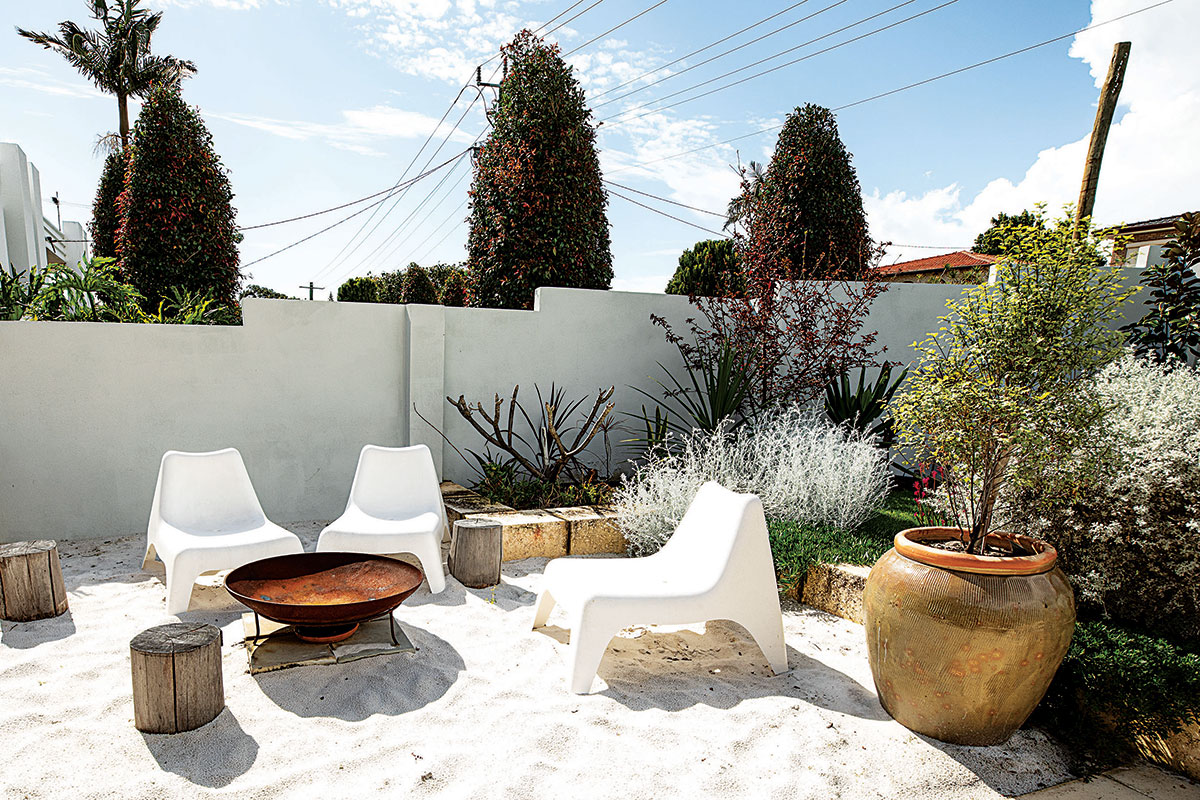
When you have worked out what you need, you can start to plan on your first map. Block in areas of grass, paving and garden beds. Mark in the plants you intend to plant in the beds. The most important thing to consider is planting multiples of the same plant. If you do singles, you won’t get a great outcome. Try to work in odd numbers if possible. Build layers, put taller species at the back and drop down in height towards the front of the bed. Consider the use of deciduous trees to let in light during winter and help block the sun in the hotter months.
Once you have a plan you like, pick up your other two maps and try something completely different. Often the more imaginative ideas come when the pressure is off and you have gotten in the mood. Show your plans to friends and relatives to get their feedback, especially if you know someone who is a good gardener.
Think about adding in some decorative elements. That might include a homemade vertical garden filled with herbs for the kitchen, or a commissioned sculpture, some laser-cut corten steel or a park bench.If you have small children, consider getting them to help you make some handmade pavers with their hand or footprints in them – or tiles or mosaics. Your children and the garden will grow together and in years to come you will have beautiful memories to reflect on.
Invest in soil preparation. It might seem like an unnecessary expense upfront but in the long run you will be glad you laid the groundwork. Improve the quality of the soil by adding organic mulch and fertiliser. Plan and install drip irrigation because it is more effective and better for the environment. You can do this yourself if you are handy or hire someone if not. Plant out the garden and water it thoroughly while it establishes.
Don’t be afraid to refine, finesse and revisit certain plantings. Only by trial and error will you truly know what will thrive in your garden, under your local conditions and with the amount of effort you are willing to put in. There’s always a solution to any problem, keep experimenting and learning. The rewards of a gorgeous garden are endless. Now get to it.

